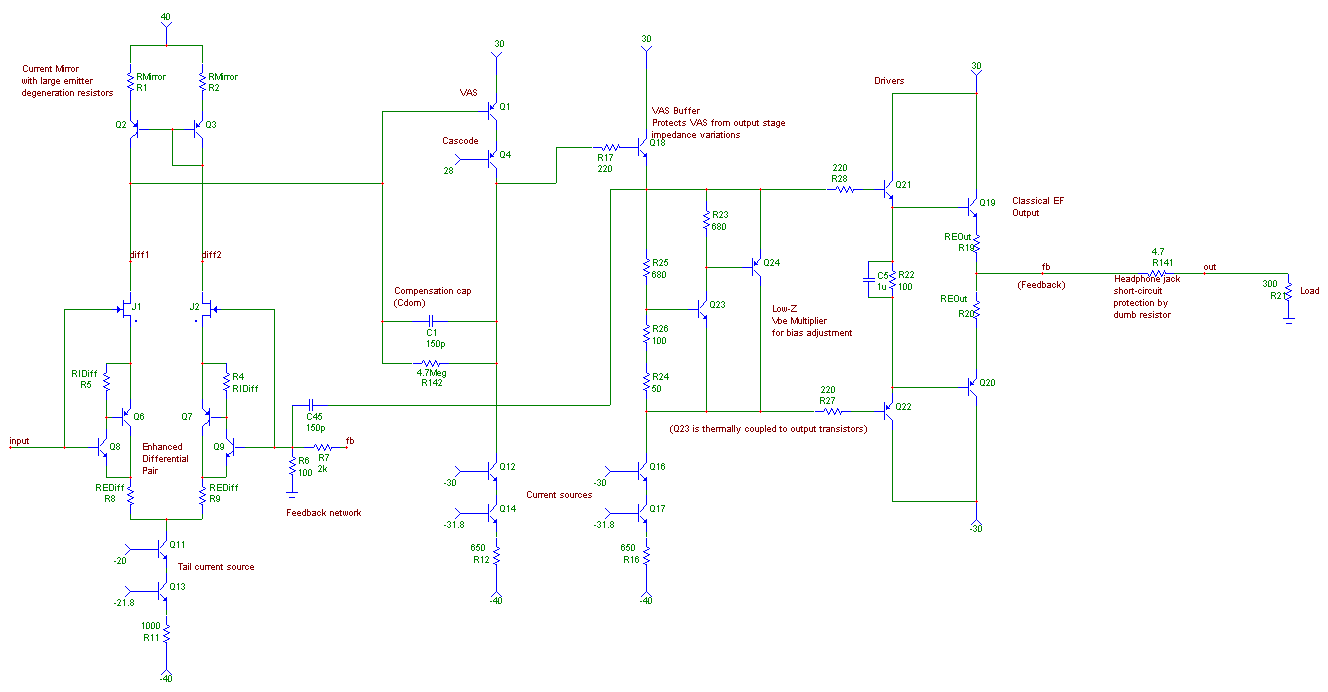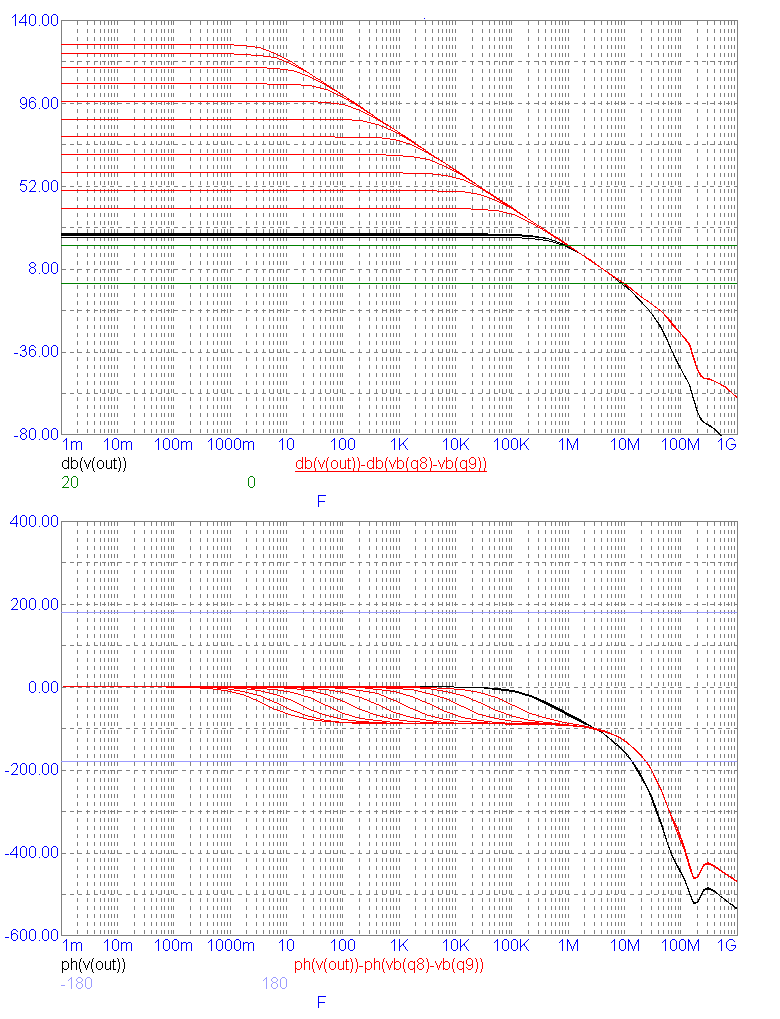
Fig. 8-1a : Simple VAS

Fig. 8-1b : Beta-enhanced
emitter follower VAS

Fig. 8-1c : Same
with cascode
Today, more listening tests. I wanted to try new VAS configurations :

Fig. 8-1a : Simple VAS | 
Fig. 8-1b : Beta-enhanced emitter follower VAS | 
Fig. 8-1c : Same with cascode |
The beta-enhanced VAS is interesting to compare to the Cascode because they have almost the same simulated memory values. However, the beta-enhanced VAS has more inherent memory, (because the power dissipated in the transistors is in no way kept constant). It appears to be the same as the cascode, only because it allows a much higher feedback factor, which in turn neatly hides all the gremlins.
On short term, A/B testing, the difference seems subtle, so I left the beta-e in for a few days to get used to its sound. A first it seemed to worsen the sound just a little, but after a while it seemed back to normal. After a few days I took it out and put the cascode instead. The change was substantial, more like getting another pair of brand new ears.
Now, when I switch, I realize that the beta-enhanced VAS, in spite of sounding good, does not stand a chance against the cascoded VAS of fig. 8-1a.
I went on searching how to get better sound from the beta-e, by trying to cascode it. This could give the best of both : a high gain and stable dissipation. I tried several configurations, which all did nothing except oscillate with total obstination. I gave up. If any one of you has ideas on this, please, email me.
Now, I tried to mess a little with the feedback factor. Have a look at fig. 8.2 below, and locate R142 (in parallel with the VAS compensation capacitor). This resistor makes a local feedback loop around the VAS and, by changing its value, we can transfer some part of the VAS gain from the global loop to local VAS linearization.
By the way, the schematic here is exactly what is right now in my high-tech laboratory (er, living room). It is my actual prototype.

Fig. 8-2 : The Prototype |
So, if we step R142 from 10K to open circuit, we get the curves in fig. 8-3. Horizontal axis in Hertz. Red is open-loop, black is closed-loop. Top is Amplitude (dB), bottom is Phase (deg).
The closed-loop amplitude curve gives us the closed loop gain, here 20 (26 dB). The space between open-loop and closed-loop gives the Feedback Factor. The values, at DC, are :

Fig. 8-3 : Bode plots for various feedback factors |
I originally had 4.7Meg in, the exact reasons leading to this value being quite forgotten in my brain. So, in a provocative and bold move, I took out R140 . Now, the simulations might be a little "optimistic", as there are probably other factors happening in the real world, like un-simulated VAS collector loading for instance, which would lower the gain.
Now, how does this amp with a whooping 100dB of feedback, and a beautiful 3 Hertz open-loop bandwidth sound like ?
The ablation of this mere resistor made the amp get so much better, that I heard loads and loads and loads of stuff that I had never noticed, on my test CDs, the ones I know best, and that I have listened to non-stop while testing this amplifier in the past weeks. And it is not just "more detailed", it is more lifelike, more enjoyable. Its weak point is definitely the CD player driving it, as it reveals mercilessly the sibilance of the CD63SE, and the differences with the Harman DVD1, which does not sssibilate, but sounds a little dead sometimes.
For instance, the moment the singer is going to start can often be predicted by the minute changes in background noise, that happen when the sound engineer slides the mic volume pot up. On Alpha's "ComeFromHeaven", last track, the singer's mic signature is a slight hum with a particular tone. I don't talk about tracks where this is really too easy, like Diana Krall's "When I look into your eyes" album, which is really noisy ; no, on this album there is no silent background at all. In the same track, you can tell the samples from one another, and notice the drum loop is actually enhanced with a real guy hitting some drums from time to time, at a very low volume. This is also the first time I actually hear sounds coming from out of my head with headphones (not on all recordings).
The imaging and soundstaging is awesome. Everything is natural and pure. Everything changes completely from recording to recording. It can be furiously violent on Propellerheads, and reproduce chamber music in all its subtlety. It does not slaughter the voices of women. Bach's grand organ sounds like a grand organ (with the church reverb coming from all directions).
The really good thing is, if you want to count the tracks on the multitracks, you can, but then once you get used to these surprising things, it just clicks in you forget about it and listen to the music... it really flows, no aggressive tonalities jump at you. It is Musical. The details are there in a natural way, not jumping at you, just being there instead of being erased by the electronics... Let me do the world's shortest review :
Next things to do :
Problem is, I'm short on ideas now. What shall I do next ? Well, I still have 400 albums to re-listen to...
Time for the weekend !!!